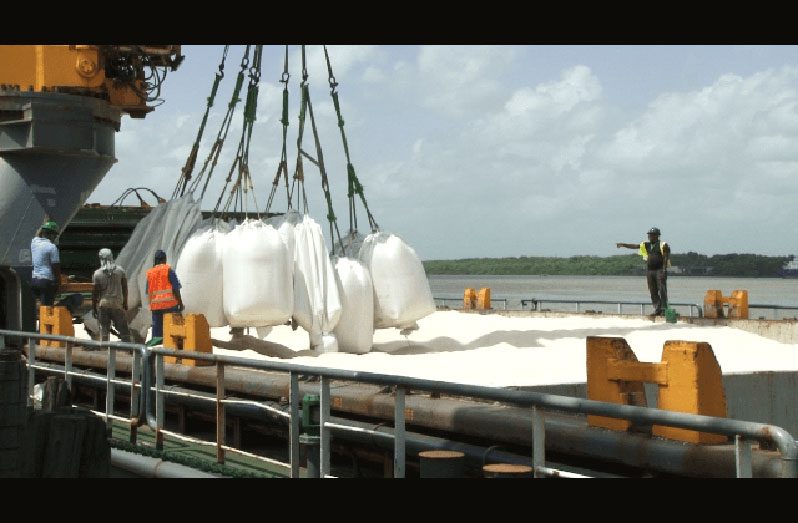–as Guyana taps BVI, Estonia, Slovenia markets
FOR the year 2021, the local rice industry raked in export revenues totalling $42.2 billion, an equivalent of US$201 million, according to Minister of Agriculture, Zulfikar Mustapha.
The minister was quoted by the government’s Department of Public Information (DPI) as saying that those earnings resulted from the exportation of approximately 434,535 tonnes of rice, paddy and its by-products.
Additionally, last year, Guyana successfully secured a number of new export markets such as the British Virgin Islands (BVI), and the European nations of Estonia and Slovenia.
The country was also able to solidify a standard rice supply agreement with sister-country, Barbados, to ensure that the island nation has a steady supply of the staple.
Those developments signal an even wider space for industry growth in 2022, Minister Mustapha said.
“We now have close to about 42 countries where we are exporting rice and we are looking to improve on that,” the minister was quoted as saying.
The rice industry’s notable contribution to Guyana’s Gross Domestic Product (GDP) could be seen as yet another demonstration of resilience from Guyana’s agriculture sector, as several industries and sub-sectors were able to bounce back from not only the ongoing impact of a global pandemic, but also months of devastating floods which destroyed thousands of acres of farmlands.
Importantly, the farmers were not left to do it alone. Thousands of farmers benefitted from myriad support initiatives instituted by the People’s Progressive Party/Civic (PPP/C) government, led by President Dr. Irfaan Ali.
These include financial assistance totalling some $7.8 billion, which paved the way for scores of rice farmers to “get back on their feet” and return to their farmlands for production.
Outside of this, rice farmers, in particular, were given additional incentives including round-the-clock drainage and irrigation support as well as assistance with critical supplies such as seed paddy and fertilisers, among other things.
The support from the government has already had a direct impact on the first rice crop for 2022, since the majority of farmers across the country have managed to move ahead with sowing their lands. National sowing projections for the year stand at an overall target of 227,240 acres, and authorities are hoping that this crop would see a notably better harvest, as compared to last year.
Prior to the floods, even during the onset of the pandemic, Guyana’s rice earnings stood at US$236.2 million more than G$51 billion. This was earned from the exportation of 574,312 tonnes of paddy, rice and rice by-products during 2020.
Under the leadership of Minister Mustapha, the exportation of a series of non-traditional crops also soared to new heights.
Specifically, figures provided to the Guyana Chronicle show that between the period January and November 2021, Guyana earned $2.6 billion from the exportation of non-traditional crops alone.
This represents an increase of $100 million in revenue when compared to the same period in 2020, and accounts for at least 10,426 tonnes of the exported produce such as fruits, vegetables, seasonings, grain crops, oil seeds, root and tuber crops.
Similarly, for the period January to November 2021, Guyana earned $2.5 billion from the exportation of coconuts and its by-products. Data shows that the exportation of dried coconuts alone raked in $1.8 billion, while $685 million was earned from the exportation of virgin coconut oil.
Those earnings also represent significant increases when compared to the previous year, which saw the industry exporting just about $1.9 billion in coconut and coconut by-products.
Since assuming office in August 2020, the government has underscored the importance of the agriculture sector, pledging extensively to make significant investments that seek to boost and modernise farming as well as value-added production.
The aim, as outlined on multiple occasions, is to position Guyana to tap into the very hefty food import bill being incurred by the Caribbean Community (CARICOM).
Guyana has already assumed its role as the lead agriculture nation in the region, and measures are being put in place to increase production of a number of crops, including soya bean and corn, to supply the regional market.
Acknowledging some unavoidable shortfalls, Minister Mustapha told DPI that more developments could have taken place last year, had the country been spared of the unprecedented floods.
“But I think that we are moving aggressively now, and we are more on the verge of making our contribution and our mark in the Caribbean market,” the minister said.
As it is, the government is also working with farmers across the country to propagate climate-resilient farming technologies, including the use of shade-houses and the implementation of hydroponics systems, among other things.




.jpg)










